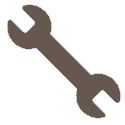Handyman Services: Your Ultimate Solution for Home Repair and Maintenance
This arcticle discusses the significance of handyman services for home repair and maintenance. It emphasizes the broad expertise of handymen in various areas such as plumbing, electrical systems, and more, highlighting the benefits of professional services over DIY projects. It also covers how to choose the right handyman, the costs involved, and strategies to maximize the value of handyman services. Additionally, it includes common tasks handled by handymen, the essential tools they carry, and explores the comparison between DIY and professional handyman services.

In today’s fast-paced world, the importance of maintaining and upgrading our homes cannot be overstated. Handyman services have emerged as the ultimate solution, providing homeowners with a seamless way to tackle everything from plumbing repairs to a fresh repaint job, all without the stress and hassles of doing it themselves1. With handymen’s broad expertise in areas such as electrical systems, roofing, window maintenance, and bathroom renovations, their ability to deliver high-quality work efficiently saves time, money, and significantly reduces the risk of errors 1.
Given the wide range of tasks that handymen can handle, from DIY projects to more complex installations and repairs, it’s crucial to choose the right service for your home’s needs1.
The Essential Toolbox: What Every Handyman Carries
Running a successful handyman business extends beyond the mastery of repair and maintenance tasks; it encompasses a solid understanding of business operations. This includes knowledge of revenue, profits, expenses, and taxes, which are all fundamental to the industry’s success. Legal knowledge is equally important, as handymen must navigate local laws and regulations, including licensing requirements and the right to rescind contracts. Operating without proper licensing can lead to legal issues and tarnish a handyman’s reputation.
All businesses, whatever the legal form, are required to secure a mayor’s permit or municipal license from the city or municipality where they are located2. Permits or licenses are required to ensure that the standards are met and that business complies with the specific requirements of the business locale. Registration procedure varies across cities and municipalities. To view the list of local government units, please visit the Department of Interior and Local Government website (https://dilg.gov.ph).
Effective communication and marketing strategies are pivotal. Utilizing written contracts can minimize disputes and clarify the scope of work, guarantee, and repair policies. This not only protects the handyman but also builds trust with homeowners. Marketing efforts, such as signage and flyers, coupled with strong customer service, help in cultivating a positive reputation and fostering repeat business and referrals. Additionally, networking with other contractors can be beneficial for tasks that fall outside one’s expertise, ensuring that all customer needs are met professionally.
Handymen equip themselves with a comprehensive toolkit to handle a variety of tasks. This toolkit includes essential power tools like circular saws, drills, and sanders, alongside hand tools such as hammers, screwdrivers, and pliers. Safety equipment, including goggles, gloves, and earplugs, is crucial for personal protection during jobs. Moreover, organization tools like toolboxes, utility belts, and buckets help in maintaining efficiency and orderliness on the job site. This extensive array of tools and equipment ensures handymen are prepared for any task, from simple repairs to complex installations.
Common Tasks and Projects Handled by Handymen
Handyman services encompass a broad spectrum of home repair and maintenance tasks, ensuring homeowners can address nearly any issue that arises. Here’s a breakdown of common tasks handled:
Exterior Services:
- Debris removal and window frame repair
- Gutter installation and repair
- Window, door and roof weatherproofing
Interior Services:
- Closet shelving, bathroom caulking, and exhaust fan installation
- Furniture painting, staining, and shelving installation
- Childproofing, picture hanging, and TV wall mount installation
Kitchen and Bathroom Remodeling:
- Bathtub repair and replacement, vanity installation
- Custom kitchen island and backsplash installation
- Cabinet and countertop installation and repair
Handymen also tackle a variety of general maintenance tasks, including:
- Basic carpentry and minor electrical fixes
- Plumbing repairs, painting, and furniture assembly
- Drywall repair, appliance installation, and carpentry
Specialized tasks such as drywall maintenance, minor plumbing and electrical work, and smart home upgrades are also within their purview. Whether it’s performing dryer vent cleaning, light fixture replacement, or even smart thermostat installation, handymen have the skills and tools necessary to efficiently complete these tasks.
DIY vs. Professional Handyman Services
When considering home repairs and maintenance, homeowners often find themselves at a crossroads: should they embark on a DIY journey or enlist professional handyman services? Each path offers distinct benefits and considerations.
DIY Projects:
- Cost Savings: Eliminating labor costs can make DIY projects more budget-friendly.
- Personal Satisfaction: Completing a project on your own brings a unique sense of fulfillment.
- Skill Development: DIY offers a valuable opportunity to learn and hone new skills.
- Flexibility: You have the freedom to work at your own pace and on your own schedule.
- Intimate Understanding: Engaging in DIY projects fosters a deeper connection with your home, allowing you to understand its nuances and history better.
Professional Handyman Services:
- Quality Assurance: Professionals ensure high-quality (hopefully), stress-free results, especially for complex tasks.
- Efficiency: Handymen can save homeowners time by completing tasks more efficiently.
- Reduced Risk of Errors: With professional expertise, the likelihood of costly mistakes is minimized.
- Access to Tools and Materials: Professionals bring their own high-quality tools and have many times also access to discounted materials.
- Expertise: For tasks requiring specialized skills, such as electrical or plumbing work, professional handymen are indispensable.
Ultimately, the choice between DIY and professional services depends on the project’s complexity, the homeowner’s skill level, and the value of time versus cost. Assessing these factors carefully will guide homeowners in making the best decision for their needs and circumstances.
How to Choose the Right Handyman for Your Home Needs
Choosing the right handyman for your home needs can seem daunting, but by following a structured approach, you can ensure a satisfactory outcome. Here are key steps to guide you through the process:
- Start with Research:
- Ask for recommendations from friends, family and neighbors.
- Check online reviews and ratings on Google My Business pages or specialized websites.
- Verify the handyman’s credentials, experience, and ensure they are fully licensed and insured to avoid scams and fraud.
- Evaluate Their Professionalism:
- Consider their communication: Do they respond promptly to calls and emails?
- Assess their appearance and whether they have the necessary tools.
- Check for a professional service guarantee and if they offer upfront pricing.
- Discuss the Project Details:
- Define the scope of work clearly and get everything in writing, including guarantees 1.
- Request a detailed written contract and discuss clean-up expectations.
- Ask for an estimated timeline and negotiate deadlines to manage any potential interruptions.
By carefully considering these aspects, you can select a handyman service that meets your home repair and maintenance needs effectively and efficiently.
Understanding the Cost of Handyman Services
Understanding the cost of handyman services is crucial for homeowners planning maintenance or repair projects. Here’s a breakdown of what to expect:
- Daily Rates: Handyman charges can vary widely, with the rate between less than ₱ 500.- and more than ₱ 2000 .-per day. For self-employed handymen, rates typically range around ₱ 1000.- , while their helpers might charge only around ₱ 500.- per day (in rural areas even less than that).
- Job Size and Costs:
- Small tasks like hanging art or replacing light fixtures range from ₱ 100.- ₱ 200.-.
- Medium projects, such as shower caulking or attic ladder replacement, cost between ₱ 500 and ₱ 1500.
- Large jobs, including room painting and extensive drywall repair, vary significantly in cost.
- State Variations and Additional Costs: Handyman rates can fluctuate based on location (main cities and rural areas). It’s also important to factor in material costs, especially for larger jobs, and many handymen charge a minimum service fee or a minimum number of hours (days). Business and living expenses, taxes, and the cost of special tools or equipment also influence the final pricing.
By understanding these factors, homeowners can better budget for handyman services, ensuring their home repair and maintenance needs are met efficiently and affordably. To read more about salaries in the Philippines, follow our links 3, 4, 5.
Maximizing the Value of Handyman Services
To maximize the value of handyman services, consider the following strategies:
- Effective Planning and Scheduling:
- Plan Ahead: By understanding that most handyman services charge by the day and often have a minimum billing period, organizing your tasks in advance can lead to significant savings. Avoiding piecemeal requests can also prevent unnecessary expenditure on minimum service charges.
- Create a Punch List: Compile a comprehensive to-do list for your handyman, grouping several hours’ worth of tasks. This ensures that you make the most out of their visit, saving both time and money.
- Consultation: Engage with a reputable handyman service early on. This allows for a professional assessment of whether your tasks require a handyman or a specialized contractor, ensuring the right expertise for the job.
- Material Management:
- Procure Materials: Purchase necessary materials beforehand. This approach not only saves time for the handyman but also reduces costs, as many services mark up prices to cover procurement efforts.
- Organization: Organize tasks by room or category. This streamlines the process, allowing your handyman to efficiently navigate through tasks without unnecessary back-and-forth.
- Leveraging Technology:
- Digital Tools: Utilize services like MySquard, known for their comprehensive home improvement solutions and professional, vetted technicians. Their use of digital tools for scheduling, communication, and task management enhances efficiency and service quality.
By adopting these strategies, homeowners can ensure they receive high-quality, efficient, and cost-effective handyman services, enhancing their home’s functionality and appearance while ensuring safety and professionalism.
FAQs
What are the different types of repair and maintenance services?
Repair services involve the restoration of an asset when it breaks, is damaged, or malfunctions. Maintenance services are routine actions taken to keep assets in good working condition, which may include both corrective and preventive measures to avoid damage and extend the asset’s lifespan.
How should a handyman introduce themselves professionally?
When introducing themselves, a professional handyman should highlight their experience and the variety of tools they possess to handle diverse repair and maintenance tasks. They should mention their background in working on both residential and commercial projects, ranging from simple fixes to extensive renovations.
What does a handyman do?
A handyman is someone who is paid to perform small jobs such as making and repairing items in people’s homes. The term can also refer to someone who is skilled at DIY tasks and enjoys fixing or crafting things around their own home.
What should be included in a handyman advertisement?
A handyman advertisement should start and end with clear contact information, including a phone number, email, and website. It should list the services offered in a bulleted format and may feature before and after photos of past work to demonstrate quality. Including a brief biography can also help potential customers connect with the handyman on a personal level.
References ⤴
[1] – How to Choose a Handyman
[2] – Department of Trade and Industry
[3] – Skilled laborer salary in Philippines
[4] – All About Minimum Wage in the Philippines in 2024
[5] – Salary Structures and Wages in the Philippines
